Tuesday, June 4, 2024
The rug is finally done
Sunday, March 24, 2024
Learning is struggle or mending a wool sweater
I see two types of sewing tutorials online. One comes from highly skilled people They make everything seem easy, but I have enough experience to know it would take me years to achieve their level of proficiency. The other comes from people who actually do crappy work. They also make it look easy, but I have enough experience to know they are not worth emulating. By and large, no one tells you that learning these skills can be difficult. I am here to do just that.
Sunday, February 18, 2024
Upcycling to reduce an annoying night time glow
Some people sew and craft for artistic reasons. I have a drive to make stuff, but I want my creations to solve problems in my life. One of my recent annoyances was the glow from controls on a HEPA air purifier we purchased about a year ago. It put out enough light to be bothersome at night.
At first, my spouse and I tried to address the problem by covering the controls with a sock. Then someone would decide to wear the sock or it would fall off and we would be back where we started. After enough of this, I decided to sew my way out of this problem.
I found an upholstery sample from my stash that I did not have another use for. I measured the diameter of the glowing controls on the filter. I used a lid to create a circle pattern that was about an inch longer than the circle on the filter. I then cut two circles from the upholstery fabric and pinned a long ribbon from my stash onto the right side of one of the circles. (I admit I originally pinned it to the incorrect side and had to redo it, but the instructions here are correct). I then stitched the circles right sides together using a 1/2 inch seam allowance and leaving about an inch opening.
I mentally cycled through various options to secure the ribbon to the filter. At one point I was leaning toward using some sort of command hook. But after letting it percolate a bit, I figured out the easiest thing was to just tie the ribbon around the cord where it inserted into the machine. I applied fray check on the end of the ribbon to keep it from unraveling.
This simple and quick project took me an hour and solved the problem. The double-layer upholstery fabric is heavy enough that it stays in place even with the air flow of the filter and does not let the light through. The fact that it is secured to the machine means that we won't lose it. My spouse was impressed with my genius, which was an added bonus.
Sunday, February 11, 2024
Quilted table cloth that stays on table
One of the more substantial projects I have completed in the past few years was a quilted tablecloth for our coffee table. Way back before we had a child, we left the table bare. But alas the child came along and quickly scratched and dented the table forcing us to cover it. Of course, we didn't have a coffee-table-sized cloth so we folded a sheet to fit the table and put binder clips around the edges in an attempt to keep it on the table. As you can see, that didn't work so well.

I had wanted for some time to make a quilted item with denim and had already collected old jeans from people in my local Buy Nothing group.
Planning the project
One of the main reasons to sew your own is that you can customize for your exact needs. I wanted a tablecloth that fit our table. The tablecloth needed to be thick enough to take abuse from the kid, but thin enough to balance a cup of coffee on. I also wanted the tablecloth to stay on the table, which I knew would be a challenge with my kid.
Once I determined what I needed the tablecloth to do, I determined the size and shape of the finished project. The table top measured 49 1/2 inches by 19 1/2 inches. I initially had planned slightly smaller, but the finished tablecloth ended up being 59 1/2 by 30 1/2 inches.
I wanted shaping in the corners so I considered whether I would sew corner seams or add the shaping another way. I decided to sew a flat rectangle that I would gather slightly at the corner with hand sewing.
The next step was to decide on the materials. I knew the top layer would be denim. I selected a piece of relatively unattractive upholstery fabric I had acquired as the batting or middle layer. I decided to use a duvet cover that I had purchased for $5 at a thrift shop for the bottom layer and binding.
Piecing the denim
 I cut the seams and worn and torn areas from the many jeans I had collected. I decided that the length of my quilt blocks would simply be the width of the final quilt.
I cut the seams and worn and torn areas from the many jeans I had collected. I decided that the length of my quilt blocks would simply be the width of the final quilt.
I created both wider and narrower blocks. For the width of the larger blocks, I laid pieces of similar size together and made blocks that varied from 6 and 8 inches, plus a 1/4 inch seam allowance on each size. I also created narrow blocks that were 2 inches plus a 1/4 inch seam allowance on each side, totaling 2 1/2 inches.
For the wider blocks, I cut the jeans to the width and then laid the pinned pieces right sides together and, using a denim needle, stitched using a 1/4-inch seam allowance. I pressed seams open as I went. The denim was easy to work with and while it took several days, the quilt top came together more quickly than I had anticipated.

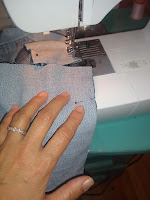

Once I had several blocks, I started stitching them together (right sides together then pressing open) with a 1/4 seam allowance). Occasionally I laid the quilt top on the table to determine if my initial size calculations were correct. In doing this, I decided to add both length and width to the quilt.
Once I finished the quilt top, I created my sandwich with the quilt top on top, the upholstery fabric in the middle and the duvet cover on the bottom. I cut the two bottom layers bigger than the quilt top because I knew that things could shift when I started stitching the layers together. I used plates from adjustable hand weights to ensure that everything was straight and taught. I pinned the layers together.
 I used a quilting foot to secure the layers. I started in the center and "stitched in the ditch" between the quilt blocks. I also stitched roughly in the middle of the wider blocks as well. I also added some perpendicular seams as well. The quilting was more arduous than I had expected. The three layers together were fairly bulky and took effort to navigate through my non-professional home machine. I had to fold and secure the edges with binder clips so I could fit it through At some point I got a little sick of this part of the project and went onto one of my Facebook upcycling pages and asked if I could stop with the quilting stitches. The replies I received said because I was using fabric in my middle layer instead of quilt batting, I could get away with less stitching than if I had been using batting, I was ok with that answer.
I used a quilting foot to secure the layers. I started in the center and "stitched in the ditch" between the quilt blocks. I also stitched roughly in the middle of the wider blocks as well. I also added some perpendicular seams as well. The quilting was more arduous than I had expected. The three layers together were fairly bulky and took effort to navigate through my non-professional home machine. I had to fold and secure the edges with binder clips so I could fit it through At some point I got a little sick of this part of the project and went onto one of my Facebook upcycling pages and asked if I could stop with the quilting stitches. The replies I received said because I was using fabric in my middle layer instead of quilt batting, I could get away with less stitching than if I had been using batting, I was ok with that answer.
Once the pieces were quilted together, I trimmed the edges of the bottom two layers.


A lot of fabric remained from the duvet cover, so I used that for the binding. I cut along the diagonal or bias in widths of 2 inches. I folded and pressed it into 1-inch bias tape. I pinned one side to the quilt stiched it, folded it over and secured the other side.
The coffee table had spindles in the middle so I knew I could secure the tablecloth to those. I stitched four leftover belt loops on the underside of the cloth to match the spindles' location. I threaded ribbon through it so that I could tie the cloth onto the table.
Sunday, January 21, 2024
Taming more chaos while upcycling
The blog post I wrote earlier this month on sew-your-own choas reducers is now the most popular post I have written. From that, I surmise I am not the only person who wants to tame the chaos in their house. I have more substantial projects that I would like to share, but I will wait on those so that I can share some more tips on reducing chaos with upcycled materials.
Just before the turn of the new year, I realized that the downstairs drawers that held my sewing materials and the upstairs drawers that held my clothing were complete disasters. I have found that store-bought organizers never work for me in part because they are never the right size. So I organized them using upcycled materials.
Vertical storage and old socks
Like many people, I read Marie Kando's The Life-Changing Magic of Tidying Up. While everything in the book sounded great, the only thing I actually implemented was storing clothes vertically. Doing this allowed me to see everything, but the drawer would revert to chaos when I unfolded one of my many black pieces of clothing to see what it was or when the drawer was less full causing the vertically folded clothes to fall over. A few weeks ago, my son cleaned out his sock drawer and left several holey socks on his floor. He was adamant that I not mend them and they sat around for a few weeks because I could not think of a use for them. Finally, I had a burst of inspiration and decided I would cut the socks into rings and use them to hold my clothes together.
Monday, January 15, 2024
Sew your own chaos reducers
I find that store-bought organization containers never fit the space I have and just collect junk. I am, however, a big fan of custom-made items. Over the past few years, I have made several items I call chaos reducers. They are fabric pockets or baskets in the exact size I need them. I have made chaos reducers for television remotes, jar lids, pencils and plastic container lids.
About a week ago I was looking in the cabinet that houses my blender, food processor and other items and I saw, well, chaos. I have too much fabric and that is also creating chaos. So, I decided to feed two birds with one scone (because who actually wants to kill birds) so I whipped up a quick project to hang the grating and food processor slicing discs.
I used an upholstery sample approximately 11.5 inches wide and 16.5 inches long with grommets pre-installed. The edges were already serged. For some reason, I really wanted the serged edges to be visible. Plus I didn't have enough width for a gusset construction, so I used construction techniques that might cause someone more expert to look askance.
I started the project by laying down the two blades and folding the fabric to roughly fit and marking the fabric. The pockets needed depth but the fabric was not wide enough so I cut a strip 2 inches wide from the bottom. I then cut the strip in half so had two about 2 inches wide and 5.25 inches long.
Then I folded the bottom of the rectangle up and I stitched on the other side of the stip from the inside. I could not stitch all the way down without catching parts of the pocket I didn't want to catch. Then I hung it on the fridge to test it. It gaped like crazy!
That reduced the gaping quite a bit. I then hung the chaos reducer inside the cabinet using Command hooks and rearranged the items. Now everything fits and is more organized.
Thursday, December 21, 2023
Low waste resolutions
Sunday, December 17, 2023
Denim ornament upcycle
It's the holiday season. While my Jewish-Muslim family does not do a lot for Christmas, many of our friends celebrate. I had a few events to attend, a few gifts to give and a desire to be sustainable. My stash of scraps and materials to upcycle is also getting too big for the space that I have in my house. Given all that, I decided to start crafting.
While I seldom wear jeans because I can't find jeans that fit well (but someday maybe I will make a pair), I have found that I like to work with denim especially piecing together different colors. I found the directions to make quilted denim stars from Pillar Box Blue and thought I would make a few as Christmas gifts for a few of my friends who celebrate.
The directions from Pillar Blox Blue were fantastic, so I won't repeat the step-by-step, but I will share my tweaks.
I made the first star using a 7cm template as described in the blog, but that turned out a little large for a Christmas ornament so I created a 6 cm template for the additional ornaments I made. The seams on the first one were a little messier than I wanted so I switched my sewing foot to a quilting foot and that helped me sew more precise about 1/4 inch seams. I also chain-stitched the diamonds for multiple starts didn't have to waste time or thread.
I basted the ribbon I wanted to use as the hanger on the edge of the right side of the denim star before I sewed the denim to the backing. That way the ribbon emerged nicely from the seam once I turned the star right side out. I also used small pieces of fabric to stuff the stars. The opening from which I stuffed it was pretty small so I used a funnel and a chopstick to help push the scraps in. While I did attach a button to the center, the ornaments looked good without additional quilting stitches so I skipped that as well.
I was pretty amazed at how well the stars turned out. And I was able to wrap the stars with upcycled materials before gifting.
Upcycled holidays
These two events involved gifting items to multiple people. So, as I often do, I decided to incorporate zero-waste principles. I did purchase a few new items such as a bottle of wine and books. But then I had fun getting creative with the garbage. Instead of purchasing gift wrap that would be used once and then tossed or recycled, I chose to reuse other items. I wrapped a few gifts with an old map and even created bows with strips cut from it.
The bottle of wine came in a bag so I cut a '5' and a '0' from a catalog that came in the mail and pasted them on to create a birthday theme. I also turned a coffee bag inside out to create a gift back for another item. I wasn't so thrilled with how simply turning it inside out looked so I cut the bag into a rectangle and transformed it into wrapping paper. I cut a few narrow strips from the bag and ran scissors against it to create curly ribbon.
I also made some upcycled gifts for these events, and you can read more about that in my companion blog post.
When we exchange gifts within the immediate family, we now use cloth bags that we then save for the next time. We have been using them for the past few years.
Sunday, December 10, 2023
Upcycling the food scraps
Food waste in the United States is a problem. The Department of Agriculture estimates that 30 to 40 percent of the food supply eventually becomes waste. Sometimes food is left unharvested in a farm field. Other times it spoils in a store or is thrown away by the consumer.
Sourdough and civics - starter and water edition
While government has many problems, it’s important to remember the essential work it does. In the United States, clean water has been a pub...
%20v3.png)
-
It’s been a hard week for those who care about diversity and equity. I am scared and I am scared about even posting this blog. But I can’t ...
-
While government has many problems, it’s important to remember the essential work it does. In the United States, clean water has been a pub...
-
I turned 52 a few weeks ago and I threw myself a low-waste birthday picnic at a local park. We have been hosting low-waste gatherings at hom...







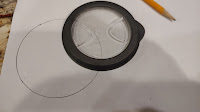









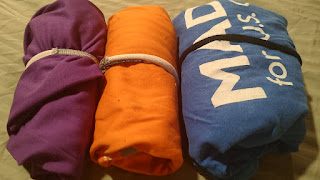




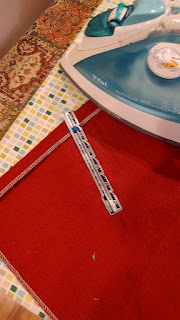






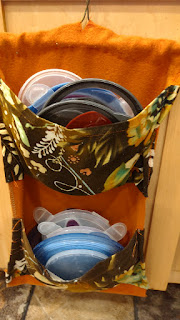
.png)








%20v3.png)
